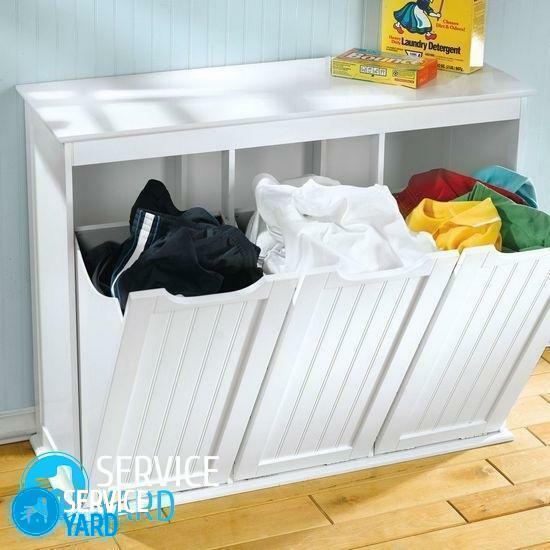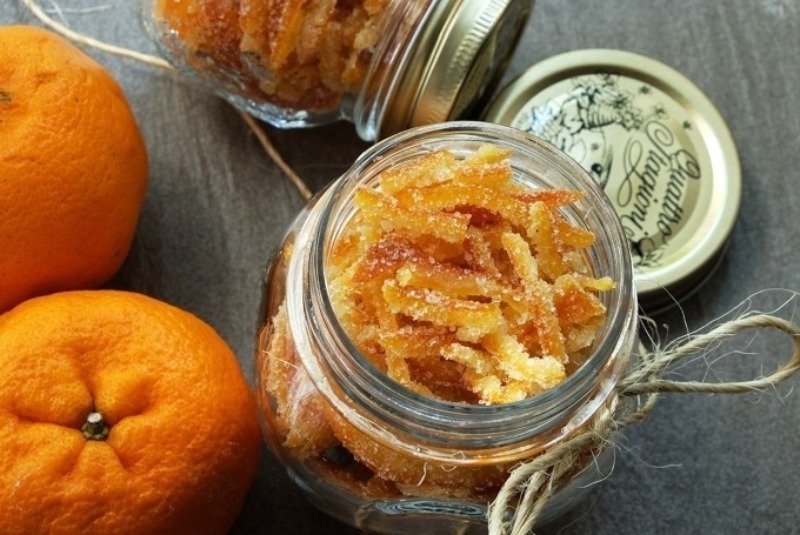
- When is it recommended to wash things with your hands?
- How to wash in a washing machine?
Our grandmothers washed all things by hand: they simply poured water into a basin, added grated laundry soap and proceeded to business. Fortunately, automatic washing machines saved us from a laborious, tedious, lengthy process, but sometimes you still have to wash some things manually. Therefore, every mistress should know how to wash with her hands and with the help of a machine, so that after the next wash on things there are no stains and other unpleasant traces. In this article we will tell you how to organize a hand wash, as well as washing things in the washing machine, because no one process can not be allowed to go by itself.
to the contents ↑When is it recommended to wash things with your hands?
Hand washing is the safest way to clean things. It can prolong the life of your clothes, especially made of delicate and special fabrics.
 Capricious elements of the wardrobe, which are recommended to be washed exclusively by hands, are:
Capricious elements of the wardrobe, which are recommended to be washed exclusively by hands, are:
- Underwear.
- Woolen things( sweaters, sweaters).
- Cashmere.
- Silk scarves and scarves.
- Lacy products.
- Delicate blouses.
- Fabrics with unstable paint.
- Baby stuff.
- Things for a newborn.
How to prepare things for washing?
Before you can manually wash, perform the preliminary work:
- Take a look at the label( label) of the product. It can be both paper and fabric, and is most often inside the clothes - on the collar or in the seam on the side. Understand the designation of pictograms on it that indicate the optimum washing temperature, the susceptibility of the product to machine or chemical processing, and also the possibility or vice versa - the impossibility of squeezing it.
- If the fabric is thin, remove all buttons, iron buckles, and the rest of the metal hardware. This prevents the appearance of red spots after washing.
- If you plan to boil things, then remove the buttons of plastic, which can be deformed during processing.
- With white products, remove colored applications, as they can shed.
- Wool things turn inside out.
- Wash clothes before hand washing.
Manual washing rules
It's easy to erase manually if you follow these recommendations:
- Do not erase colored and light items at the same time.
- After washing, wash the products as quickly as possible so that the stains do not dry out.
- In soapy water, the less polluted items are cleaned first, then a little dirtier and finishing with the most dirty. In difficult cases, use a brush or a washing board.
- For each type of fabric you need to use your detergent.
- The softer the fabric, the colder the water.
- The cuffs of the men's shirts and collars are first wipe with a soap and soap and then wash.
- Hand wash gentle fabrics very carefully, so as not to stretch the product.
- Soak a product that can be shed during washing, preferably in water with table salt.
- When rinsing, adhere to the following tips:
- Rinse all products thoroughly so that no stains of soap or powder remain on the items.
- Use a special rinse. Dilute them with water according to the instructions.
- Change the water during rinsing until it is clean and clear.
- When rinsing the colored clothes, add a little vinegar to the water.
Tips for processing products from various materials
- The knitted thing is soaked in cold water with the addition of vinegar, and during the rinse into the water add glycerin( 1 tablespoon per 10 liters of water).
- Oily clothing is easier to wash if using the following method:
- Grind the laundry soap( ¼ piece) and dissolve in 1 liter of boiling water.
- In the cooled solution add 0.5 liters of kerosene and 1 tbsp.l.any detergent.
- With the prepared solution, rub the overalls( collar, cuffs, sleeves) and leave for 24 hours in a folded form.
- At the end of the overalls, spread in soapy hot water and rinse thoroughly in a warm one.
- Dry these things in the fresh air to get rid of the unpleasant odor.
- Wash down eiderdowns in a warm solution prepared from baby soap and shampoo.
- Things made of silk and wool are easier to erase if you add mustard to the water. It will help to remove greasy stains. Use the product as follows:
- 1 tbsp. Dry mustard soak in water and rub so that the liquid dough turns out.
- Wipe the resulting dough through gauze.
- Let it sit for 2 hours in warm water.
- Do not add detergents during washing.
- Do not rub mohair while washing. They need to be pressed between towels. While the mohair product is wet, comb it with a brush.
- To keep the appearance of the terry towel and its fluffiness, after washing, immerse the products in salted water. Terry towels should not be ironed.
- To properly wash the tulle, follow these steps:
- Shake the curtains to remove dust. Soak in salty warm water. Change the water at least 3 times.
- Soak the curtains in the detergent solution and leave them for several hours( the remedy should be intended for washing synthetics).
- Prepare a new portion of the cleaning solution.
- Wash the tulle at a temperature of 50 ° C. Do not rub the product or unscrew it.
- Rinse the tulle first in warm water, then in cold water. In the rinse water, add a small amount of milk to the blue solution so that the curtains look like new.
- Do not wring the tulle, but dry it in a straightened form.
- Instead of twisting, wrap the curtains in a dry towel and change the towel as it gets wet.
- Post the tulle to the air.
Hand washing correctly - step by step instruction
 It is not so difficult to wash with your hands, for this you only need to prepare 2 bowls with water( one for washing, the other for rinsing) and stock up with detergent.
It is not so difficult to wash with your hands, for this you only need to prepare 2 bowls with water( one for washing, the other for rinsing) and stock up with detergent.
Important! If you do not have a wash basin, use a bathtub or sink with a stub.
Step-by-step process instruction:
- Pour warm water into one bowl.
Important! Different fabrics require a different temperature: white and light things need hot water, dark - cold.
- Dissolve in the water 1-2 tbsp.l.powder( depending on the size of the basin).For hand washing, liquid powder is best suited, which instantly dissolves in water.
- Stir the detergent well by hand. Soap flakes should not remain in the water, otherwise products may become covered with stains.
- Put the items in soapy water and leave for 10-15 minutes. Rub the most dirty areas of the products with your hands using a clothes brush.
- You can erase in two ways:
- With a stick. Stir things in the water up and down( or in a circle) with neat movements.
- Do the same procedure with your hand.
Important! Take care that things do not get tied up in knots and do not get confused with each other.
- Take each thing separately and rub the fabric against each other.
Important! If you have a washing board, then use it to handle dirty things.
- Each product separately and in turn rinse in clean cool water.
- Gently squeeze out excess water.
Important! For delicate fabrics, use a towel to spin.
- Hang clothes to dry. Wool and cashmere dry on a flat surface, laying under them a clean sheet.
Important! That clothing does not fade in the sun, during drying, turn it inside out.
Tips & Warnings:
- If you need to whiten white things, then do this after washing before rinsing.
- Before washing, be sure to check all pockets for foreign objects.
How to wash in a washing machine?
We hope that you already know the basic rules, and you understand that in addition to the machine for washing, you need a high-quality detergent, water and electricity.
Preparatory stage
 Before you wash items in the automatic machine, you must carry out preliminary training:
Before you wash items in the automatic machine, you must carry out preliminary training:
- Check the labels on the clothes and see if you can wash the product in the car, how to wash it, at what temperature and what kind of detergent.
- Prepare clothes:
- Take out all objects from things. Ensure that the products do not have pins or other metal objects that could damage the cuff of the hatch.
- Remove the straps from the trousers.
- Close all zippers and buttons.
- Pull out your trousers and jeans inside out.
- Tie the shoelaces.
- Shirt sleeves straighten.
- Remove socks, stockings, clothing from knitwear and terry cloth, as well as pillowcases and duvet covers.
- Put small things and underwear in a special bag for washing.
- Sort the laundry according to color, fabric composition. Separately, highlight heavily soiled clothes and things that can shed.
- Treat greasy stains with a stain remover.
Automatic washing - Step-by-step instruction
To correctly wash things in the washing machine, it is necessary to observe the following sequence of actions:
- Putting clothes into the machine. During the bookmark, follow the manufacturer's recommendations, strictly observe the optimum load weight specified in the instructions. Observe the following rules:
- Do not fill the machine to failure, and distribute things evenly for each wash.
- Do not wash too large or too small items, for example, a sheet with socks, so as not to expose the machine to an imbalance.
- Do not wash too little clothing.
- Select a program. To qualitatively wash things, choose the right mode for washing, rinsing and spinning. It all depends on the type of fabric and the degree of its contamination. Adhere to the following general recommendations:
- Light cotton and linen fabrics should be washed at 95 C and squeezed out at the highest possible speed.
- Color cotton underwear wash in hot water up to 60 C and squeeze at the highest rpm.
- Wash synthetic fabrics at a temperature of no higher than 50 C, and squeeze at 800-900 rpm.
- Things that can be shed are processed in cool water not higher than 30 C.
- For washing delicate fabrics( wool, silk), use water no higher than 40 C, and spin at speeds not more than 600 per minute or at all give up the last.
- Selection of detergents. Choose the product according to the type of fabric and type of contamination, based on the information on the package. Also consider these helpful tips:
- Do not use detergents intended for hand washing. A plentiful foam can not only stay on things, but also damage the machine itself.
- Pollution, soluble in water( salt, sweat, etc.), easily washed off with a solution of water and detergent.
- Pollution, insoluble in water( sand, grease, pigment spots), can overcome only chemicals with enzymes.
- Use the optimum dose of detergents, otherwise things will be hard and poorly washed after washing, and the machine will wear out more quickly.
Important! Do not add detergent directly to the drum on clothes, since in the folds of the products the powder can not completely dissolve. Fall asleep in a special container. If they are not provided, pour the detergent powder outside on the filled and closed drum.
- After the washing process, shake and dry the clothes.
- Hang washed laundry and iron as needed.
Tips and Tricks:
- Before you download a thing into the machine, check to see if it does not shed. To do this, moisten a small area of the product with warm water and wipe with a white cloth: if the substance remains clean, then safely wash the product.
- So that pockets and cuts for buttons on knitted and crocheted things are not stretched, sew them before washing with small stitches, and after drying, rasporite.
- Do not wash shirts and shirts with heavy things, otherwise they may tear.
- Do not wash more than one pair of denim items in one time, since they take up a lot of space and can overload the machine.
- Do not mix detergents or powder with other chemicals, for example, bleach can not be mixed with ammonia, as this creates a deadly poison gas.
- Wool clothes wash without pre-soaking.
We hope that the information obtained will allow you to simplify the washing process, and so that you are not bored, we recommend listening to music and singing along with it during the washing process. Let your things please you with cleanliness and whiteness, and a good mood does not leave you even during such occupation as washing.



